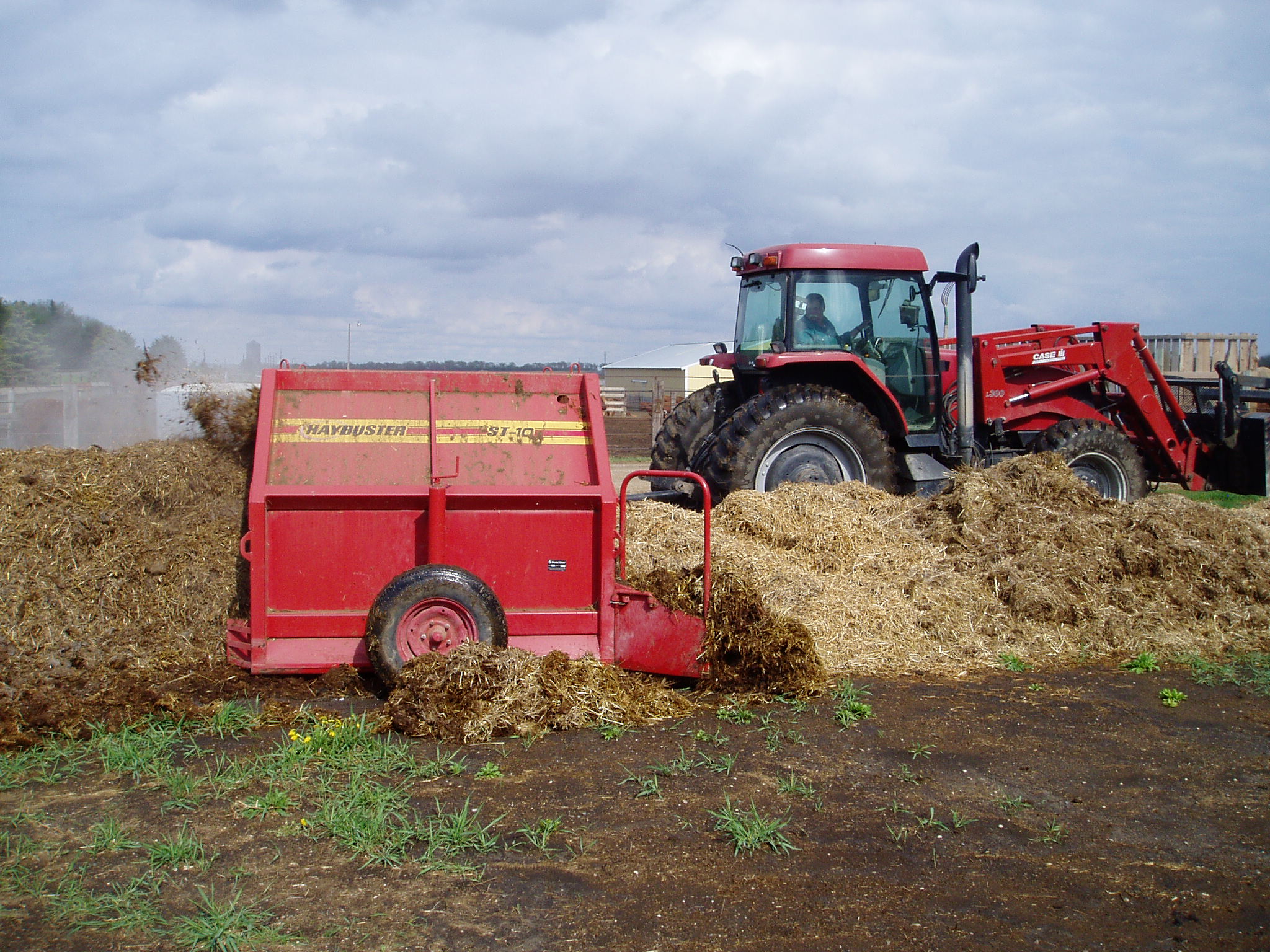
 May 24, 2011, Carrington,
May 24, 2011, Carrington,
ND – North Dakota’s long, cold winter has led to larger than normal
accumulations of manure and bedding, and may delay producers’ fertilizer
application.
May 24, 2011, Carrington,
ND – North Dakota’s long, cold winter has led to larger than normal
accumulations of manure and bedding, and may delay producers’ fertilizer
application.
Producers typically apply
manure as a fertilizer in the spring before planting and in the fall after
harvest. However, many producers may skip the manure application this spring.
That could result in manure storage facilities reaching full capacity.
 |
|
| This implement is turning compost. A compost pile needs to be turned three to five times to get oxygen into the compost. |
Composting is a possible
solution to the manure storage problem, according to Chris Augustin, nutrient
management specialist at North Dakota State University’s Carrington Research
Extension Center.
Composting kills weed
seeds and pathogens, and reduces manure volume. Research indicates that
composting reduces manure piles by half to two-thirds. Compost also is less
dense than raw manure. This reduces hauling costs because producers have less
and lighter material to apply on a field.
“Composting is more than
piling manure and letting it sit, though,” Augustin says. “Composting is a
speedy decomposition process. The bacteria and fungi responsible for composting
are indigenous to the pile. It is our job to create a habitable environment for
the decomposition organisms.”
Manure composting requires
20 to 40 parts of carbon for every one part of nitrogen. This is equal to about
80 percent cattle manure and 20 percent straw bedding. Manure is the nitrogen
source and straw is the carbon source.
The compost pile also must
have adequate air and water. Fifty percent of the pore space needs air and the
remaining 50 percent needs to be filled with water. The pile should feel like a
well-wrung-out rag, Augustin says. If water drips out of a handful of compost,
it is too wet. If it doesn’t feel damp to the touch, then it is too dry.
After piling the compost,
the pile should heat to more than 130 Fahrenheit in two or three days. If the
pile does not heat, then one of the four factors (carbon, nitrogen, air and
water) is not in the pile in the recommended amount. The temperature should
remain above 130 Fahrenheit for a couple of weeks and then decline. Once the
temperature falls, the pile needs to be turned.
Producers can buy
implements designed for turning compost, but turners can be expensive. One
alternative is to use bucket tractors to turn piles. Also, Soil Conservation
Districts in Wells, Stutsman and LaMoure counties offer custom turning
services.
Turning the pile
introduces oxygen into the compost and will stimulate the microbes in the pile
to continue heating.
“The idea is to move
materials from the outside of the pile to the inside of the pile and add air to
the system,” Augustin says.
The duration of subsequent
heating cycles will shorten with each turn. After three to five turns, the
manure is composted.
Augustin suggests letting
the compost sit for a few weeks to allow it to cure. Applying compost that has
not cured can cause phytotoxicity issues. Once the pile has assumed ambient
temperatures, it is ready to be used as a fertilizer.
However, compost needs to
be sampled for nutrients before it is applied on a field. About 15 percent of
the total nitrogen, 30 percent of the total phosphorus and 30 percent of the
total potassium in the compost should be available to the crop that’s planted.
Producers who would like
their manure compost tested for nutrients may contact Augustin at (701)
652-2951 or chris.augustin@ndsu.edu.